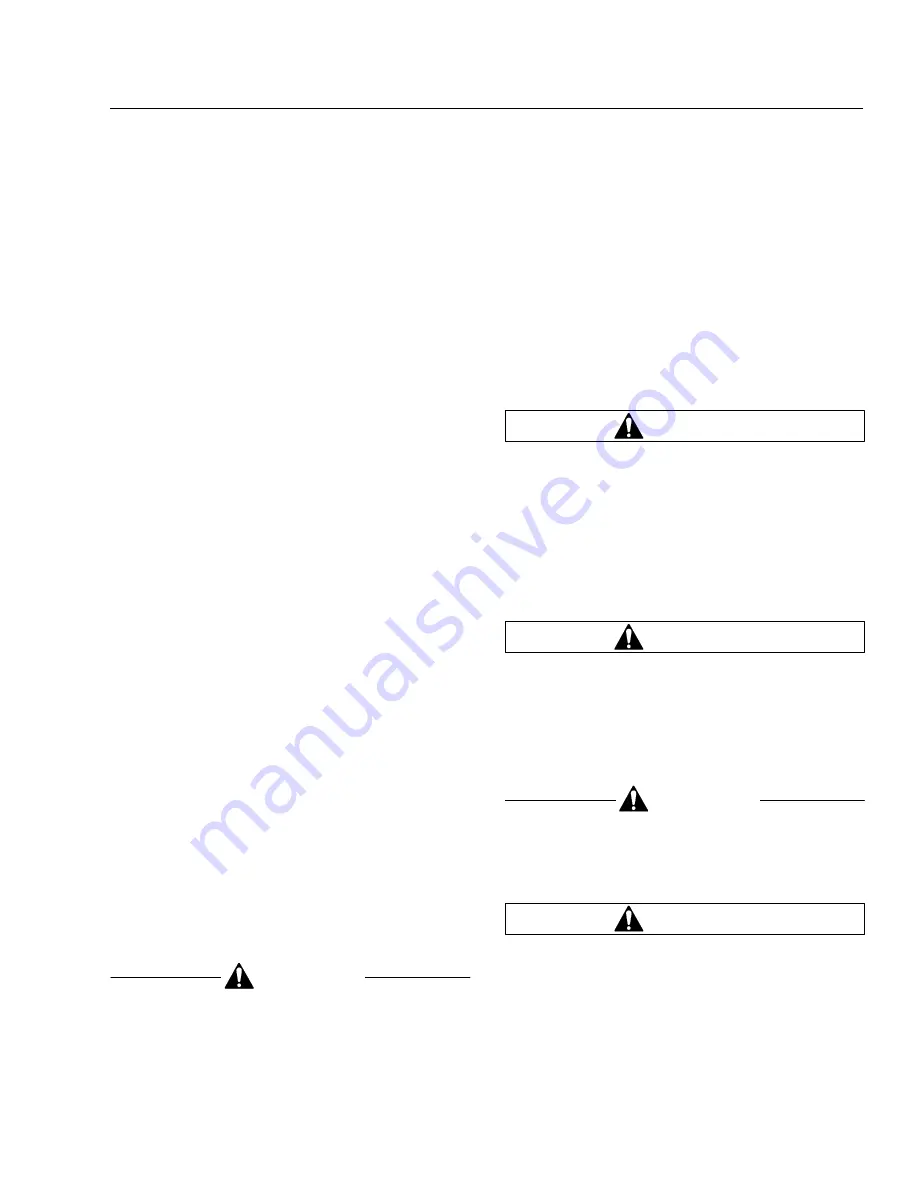
•
Forward/reverse directional shifts are typically
not permitted if appreciable output shaft speed
is detected.
•
When some types of unusual transmission op-
erating conditions are detected by the TCM,
the TCM temporarily limits transmission opera-
tion until the vehicle can be driven to a service
location. When this type of situation is de-
tected, the TCM will lock the transmission in a
safe gear range.
•
The TCM will prevent shifts from park or neu-
tral to range when auxiliary equipment, such as
a power takeoff unit (PTO), is in operation.
Operating Instructions, On-Highway
Transmissions
Allison automatic transmissions are electronically
controlled. The shift selector provides five or six for-
ward ranges and one reverse range.
P (Park, optional on 1000 and 2400
Series)
Use park when turning the engine on or off, to check
vehicle accessories, to operate the engine in idle for
longer than 5 minutes, and for stationary operation of
the power takeoff, if equipped. This position places
the transmission in neutral and engages the park
pawl of the transmission.
NOTE: This does not apply the parking brake.
PB (Auto-Apply Parking Brake, optional
on 2000 Series)
The auto-apply parking brake places the transmis-
sion in neutral and applies the parking brake.
R (Reverse)
Reverse is used to back the vehicle. When the selec-
tor is in reverse, the reverse warning signal will
sound. Always bring the vehicle to a complete stop
before shifting from a forward range to reverse, or
from reverse to a forward range.
CAUTION
Extended idling in reverse may cause transmis-
sion overheating and damage.
Do not idle in reverse for more than 5 minutes. Se-
lect P (park), PB (auto-apply parking brake), or N
(neutral) when time at idle exceeds 5 minutes.
NOTE: The shift into reverse may not succeed if
a range inhibitor is active. Check for illumination
of the RANGE INHIBIT indicator.
N (Neutral)
The neutral position places the transmission in neu-
tral. This position is used when starting the engine
and for stationary operation.
WARNING
Failure to apply the vehicle parking brakes when
the transmission is in neutral may allow the ve-
hicle to move unexpectedly, possibly causing
property damage or personal injury.
When neutral is selected, the vehicle service brakes,
parking brake, or emergency brake must be applied.
Selecting neutral does not apply vehicle brakes un-
less an auxiliary system to apply the parking brake is
installed.
WARNING
Do not coast in neutral. Coasting in neutral can
cause an accident, possibly resulting in severe
personal injury or death.
Do not let the vehicle coast in neutral. If the vehicle
is allowed to coast in neutral, the engine brake will
not work and you could lose control of the vehicle.
CAUTION
Coasting in neutral can cause severe transmis-
sion damage.
D (Drive)
WARNING
When going downhill, use a combination of
downshifting, braking, and other retarding de-
vices to control vehicle speed and the engine’s
rated governed speed. Failure to do so could re-
duce vehicle braking, possibly causing loss of
vehicle control and resulting in personal injury or
property damage.
Drivetrain
8.4


























